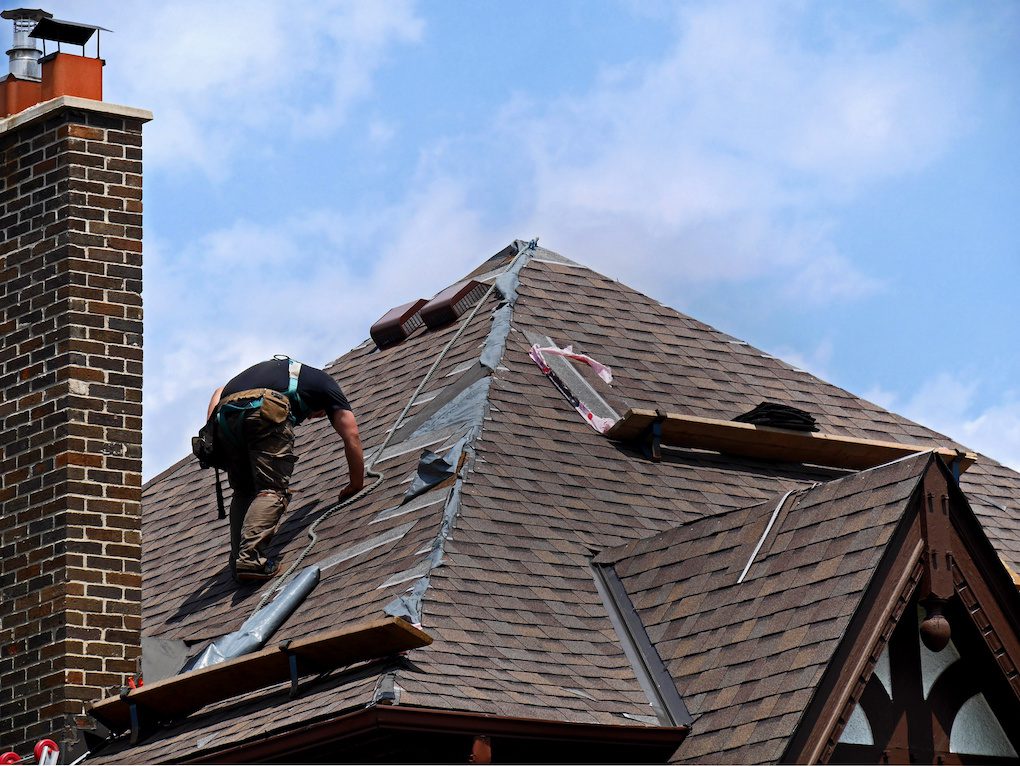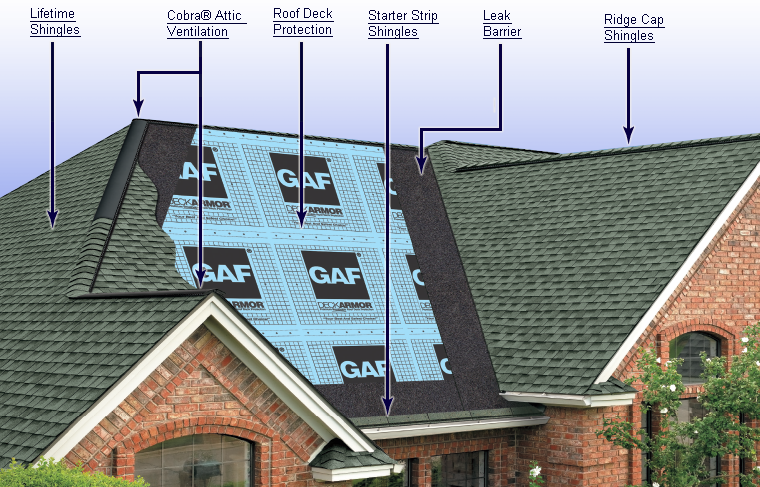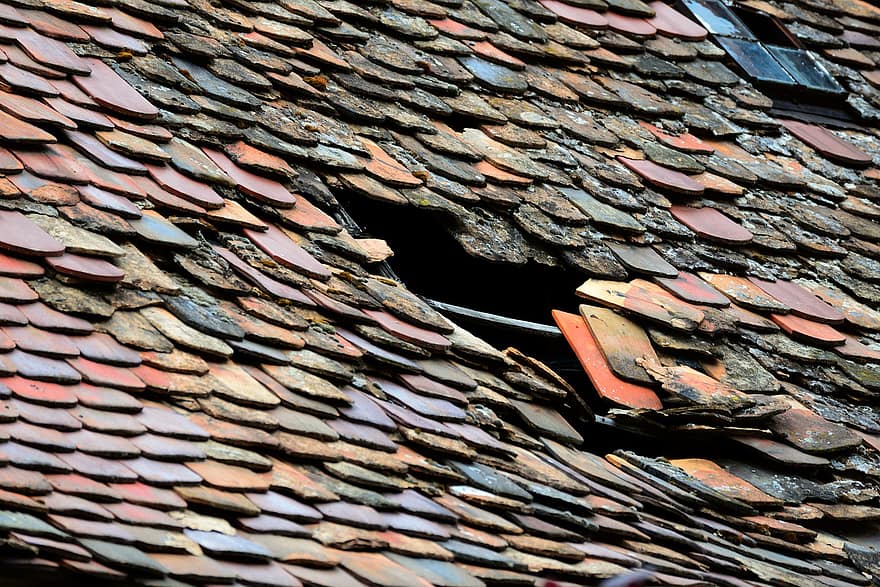Imagine waking up one morning and discovering that your roof is in desperate need of replacement. Panic sets in as you realize the potential cost and disruption to your daily life. Don’t worry, we’ve got you covered. In this article, we will explore just how long it takes to replace a 2000 sq ft roof, providing you with valuable information to ease your worries and help you make informed decisions. So sit back, relax, and let us guide you through the process.

Preparation
Before you begin the process of replacing your roof, there are a few important steps to take to ensure a smooth and efficient project.
Assessing the roof condition
The first step in preparing for a roof replacement is to assess the condition of your current roof. Take a close look at the shingles, checking for any signs of damage or deterioration. Look for missing or loose shingles, curling or blistering shingles, and any signs of leaks or water damage. It’s also important to inspect the roof deck for any soft or rotten areas that may need repair or replacement. Assessing the overall condition of your roof will help you determine the extent of the work needed and guide you in selecting the right materials for the job.
Obtaining necessary permits
Many roofing projects require permits from your local building department. Before you begin the roof replacement process, check with your city or county to determine if any permits are necessary. Permit requirements can vary, so it’s important to research and understand the regulations in your area. Applying for and obtaining the necessary permits in advance will ensure that your project stays on track and complies with local building codes.
Ordering materials and equipment
Once you have assessed the condition of your roof and determined the scope of the project, it’s time to order the materials and equipment you will need. The type of roofing material you choose will depend on factors such as your budget, personal preferences, and the climate in your area. It’s important to order the right quantity of materials to avoid delays and additional costs. Additionally, you may need to rent or purchase certain tools or equipment for the project, such as roofing nailers, ladders, and safety gear. Make a list of all the necessary materials and equipment and ensure they are readily available before you start the project.
Removal of Old Roof
Once you have completed the necessary preparations, it’s time to start removing the old roof. This process involves several important steps to ensure a clean and stable foundation for the new roof.
Removing shingles
The first step in removing the old roof is to strip off the existing shingles. This can be a labor-intensive process, as each shingle needs to be carefully pried up and removed. It’s important to take your time and use the proper tools to avoid damaging the roof deck underneath. As you remove the shingles, be sure to dispose of them properly to keep the worksite clean and safe.
Inspecting and repairing roof deck
After the old shingles have been removed, it’s important to inspect the roof deck for any signs of damage or deterioration. Look for any soft or rotten areas that may need to be repaired or replaced. This step is crucial to ensure a solid and stable foundation for the new roof. Take the time to make any necessary repairs before proceeding to the next steps.
Clearing debris
Once the old shingles have been removed and the roof deck has been inspected and repaired, it’s important to clear the debris from the worksite. This includes removing any loose nails, shingle remnants, and other debris that may have accumulated during the removal process. Cleaning up the area will not only improve safety but also make it easier to install the new roof.

Roofing Installation
With the old roof removed and the deck in good condition, it’s time to install the new roof. This process involves several key steps to ensure a durable and long-lasting roof.
Installing underlayment
Before the shingles can be installed, it’s important to lay down a layer of underlayment. Underlayment provides an extra layer of protection against leaks and moisture. It typically consists of a waterproof material, such as asphalt-saturated felt or synthetic underlayment. Carefully measure and cut the underlayment to fit the roof, ensuring proper overlap and coverage. Secure the underlayment to the roof deck using nails or staples, making sure to follow the manufacturer’s instructions.
Applying new shingles
Once the underlayment is in place, it’s time to install the new shingles. Start at the bottom edge of the roof and work your way up, overlapping each row of shingles to ensure proper water drainage. Use roofing nails or staples to secure the shingles to the roof deck, following the manufacturer’s recommendations for placement and spacing. Pay attention to the pattern and alignment of the shingles to ensure a professional and aesthetically pleasing look.
Installing flashing and vent pipes
In addition to shingles, there are other components that need to be installed to ensure a watertight roof. Flashing is used to create a waterproof barrier in areas such as valleys, chimneys, and vents. It is typically made of metal and is installed by being fitted around these vulnerable areas. Vent pipes, which allow for proper ventilation in your home, also need to be installed. Properly sealing and securing all flashing and vent pipes is crucial to prevent leaks and maintain the integrity of the roof.
Ensuring proper insulation
Insulation plays a key role in maintaining energy efficiency and comfort in your home. During the roof replacement process, it’s important to ensure that the appropriate insulation is in place. This may involve adding or replacing insulation in the attic or other areas of the roof structure. Proper insulation will help regulate temperature and reduce energy costs, so make sure it is given proper attention during the installation process.
Finishing Touches
With the new roof installed, there are a few final tasks to complete the project and ensure everything is in order.
Cleaning up the area
After the roof replacement is complete, it’s important to thoroughly clean up the area. This includes removing any debris, nails, or other materials that may have accumulated during the installation process. Cleaning up the area not only improves the overall appearance but also helps maintain the safety of your property.
Inspecting for any remaining issues
Once the installation is complete, it’s important to inspect the new roof for any remaining issues or potential problems. This can include checking for proper shingle alignment, ensuring all flashing and vent pipes are secure, and inspecting for any signs of leaks or damage. It’s better to catch and address any issues early on rather than waiting for them to escalate.
Finalizing paperwork and payment
Finally, it’s important to complete any necessary paperwork and finalize payment with your roofing contractor. This may include signing off on the completion of the project, obtaining warranties or guarantees, and settling any outstanding balances. Taking care of these final details will provide peace of mind and ensure a smooth transition from the installation process to enjoying your new roof.

Factors Affecting Time Frame
The timeline for a roof replacement project can vary depending on several key factors. Understanding these factors will help you better estimate the time it will take to complete your specific project.
Roofing material chosen
One of the main factors that can affect the time frame for a roof replacement is the type of roofing material chosen. Different materials have different installation requirements and may require additional steps or processes. For example, asphalt shingles are generally quicker to install compared to materials like metal or slate. The type of material you choose will impact the overall time frame for the project.
Weather conditions
Weather conditions can also significantly impact the time it takes to replace a roof. Poor weather, such as rain, snow, or high winds, can delay the installation process and pose safety risks for the workers. It’s important to plan your project during a period of favorable weather to minimize potential delays. However, it’s always a good idea to have a contingency plan in case unexpected weather conditions arise.
Complexity of the roof structure
The complexity of your roof structure can also affect the time frame for the replacement project. Roofs with multiple angles, slopes, and features such as dormers or skylights may require additional time and effort to install properly. The more intricate the roof design, the longer it may take to complete the installation process.
Availability of labor
The availability of labor can also impact the time frame for a roof replacement. If there is a high demand for roofing contractors in your area, it may take longer to schedule and complete the project. Additionally, if materials need to be ordered or special equipment needs to be rented, it’s important to factor in any potential delays caused by availability issues.
Roof Replacement Timeline
While the time frame for roof replacement can vary depending on the factors mentioned above, it’s helpful to have a general idea of the average timeline for completing a project of this nature.
Average time frame for project completion
On average, a roof replacement project for a 2000 square foot roof can take anywhere from a few days to a few weeks. This time frame includes the necessary preparations, removal of the old roof, installation of the new roof, and finishing touches. It’s important to keep in mind that every project is unique, and the duration will depend on the specific circumstances of your roof replacement.

Hiring Professionals vs. DIY
When it comes to a significant project like roof replacement, you may be considering whether to hire professionals or tackle the project yourself. While each option has its own pros and cons, there are several key benefits to hiring professionals for a roof replacement.
Benefits of hiring professionals
-
Experience and expertise: Professional roofers have the knowledge and experience necessary to handle roof replacement projects efficiently and effectively. They are familiar with the latest industry standards and techniques, ensuring a high-quality installation.
-
Safety: Roof replacement can be a dangerous task, especially if you’re not trained or experienced in working at heights. Professionals have the necessary safety protocols and equipment to minimize the risk of accidents or injuries during the installation process.
-
Time and efficiency: Professional roofers are accustomed to working within a set timeframe and can complete the project in a timely manner. They have the necessary tools and equipment to work efficiently, saving you time and ensuring a faster completion.
-
Warranty and guarantees: Reputable roofing contractors often provide warranties or guarantees on their workmanship and materials. This provides you with peace of mind knowing that if any issues arise in the future, you have recourse for repairs or replacements.
Considerations for DIY projects
While hiring professionals may be the recommended option for roof replacement, some homeowners may still choose to tackle the project themselves. If you’re considering a DIY roof replacement, here are a few important factors to keep in mind:
-
Skill and experience: Roof replacement is a complex and physically demanding project. It requires a certain level of skill and experience to ensure proper installation and minimize the risk of mistakes or damage. If you’re not confident in your abilities or don’t have any prior experience with roofing, it may be best to seek professional help.
-
Safety: Working at heights can be dangerous, especially if you’re not familiar with proper safety procedures and equipment. It’s essential to prioritize your safety and the safety of those around you. If you’re not confident in your ability to work safely at heights, it may be best to hire professionals who are trained for the job.
-
Tools and equipment: Roof replacement requires specialized tools and equipment that may not be readily available to homeowners. These tools can be costly to rent or purchase, and without them, it may be challenging to complete the project properly.
-
Time and effort: Roof replacement is a time-consuming and physically demanding task. It requires a significant amount of time and effort to remove the old roof, install the new roof, and complete the necessary finishing touches. Consider your availability and willingness to put in the required time and effort before deciding to take on the project yourself.
Tips for a Smooth Roof Replacement Process
Whether you decide to hire professionals or tackle a DIY roof replacement, here are some helpful tips to ensure a smooth and successful project:
Do thorough research before hiring a contractor
If you decide to hire professionals for your roof replacement, it’s important to do your research before choosing a contractor. Take the time to research and vet different companies, checking for their reputation, experience, and customer reviews. Ask for recommendations from friends, family, or neighbors who have recently had their roofs replaced. Getting multiple quotes from different contractors will also help you compare prices and ensure you’re getting a fair deal.
Get multiple quotes
Before proceeding with any roofing project, it’s important to get multiple quotes from different contractors. This will give you an idea of the average cost for your specific project and help you make an informed decision. When obtaining quotes, be sure to provide accurate and detailed information about your roof, including its size, materials, and any specific requirements or preferences.
Plan the project during favorable weather
Scheduling your roof replacement during a period of favorable weather is crucial to minimize potential delays and complications. While it may not always be possible to predict the weather accurately, try to plan the project during a season with more stable weather conditions. This will help ensure a smoother installation process and minimize the risk of weather-related issues.
Communicate and ask questions during the process
Effective communication with your roofing contractor is essential throughout the roof replacement process. Don’t hesitate to ask questions or seek clarification on any aspects of the project. Clear communication will help ensure that everyone is on the same page and that your expectations are met. Regular updates from the contractor will also help you stay informed about the progress of the project.
Prepare your home and surroundings
Before the roof replacement begins, take the time to prepare your home and surroundings. Remove any valuable or fragile items from the areas near your home to prevent potential damage during the installation process. Clear the driveway and walkways to provide the contractors with easy access to the worksite. It’s also a good idea to inform your neighbors about the upcoming project to minimize any inconvenience or disruptions.

Conclusion
Replacing a roof is a significant home improvement project that requires careful planning and consideration. From the initial preparation to the final touches, each step in the process plays a crucial role in ensuring a successful roof replacement. By taking the time to assess the roof condition, obtain necessary permits, order materials and equipment, remove the old roof, install the new roof, and complete the finishing touches, you can enjoy a durable, long-lasting roof that protects your home for years to come. While there are factors that can affect the time frame for a roof replacement, hiring professionals offers numerous benefits, including their experience, expertise, and warranties. However, if you choose to tackle the project yourself, be sure to prioritize safety, research and plan thoroughly, and allocate enough time and effort to complete the job properly. With the right preparation, communication, and attention to detail, you can have a smooth and successful roof replacement process.